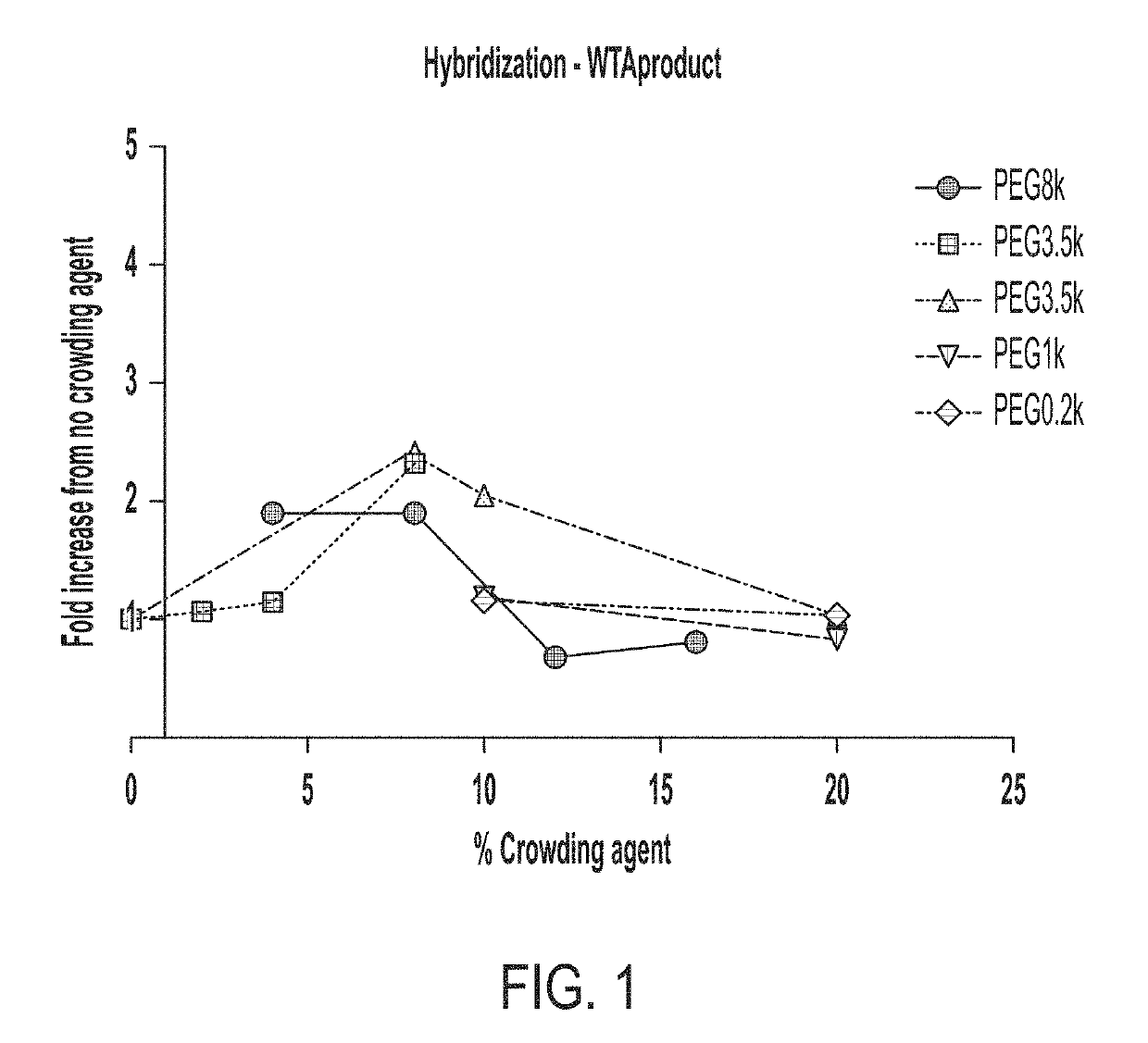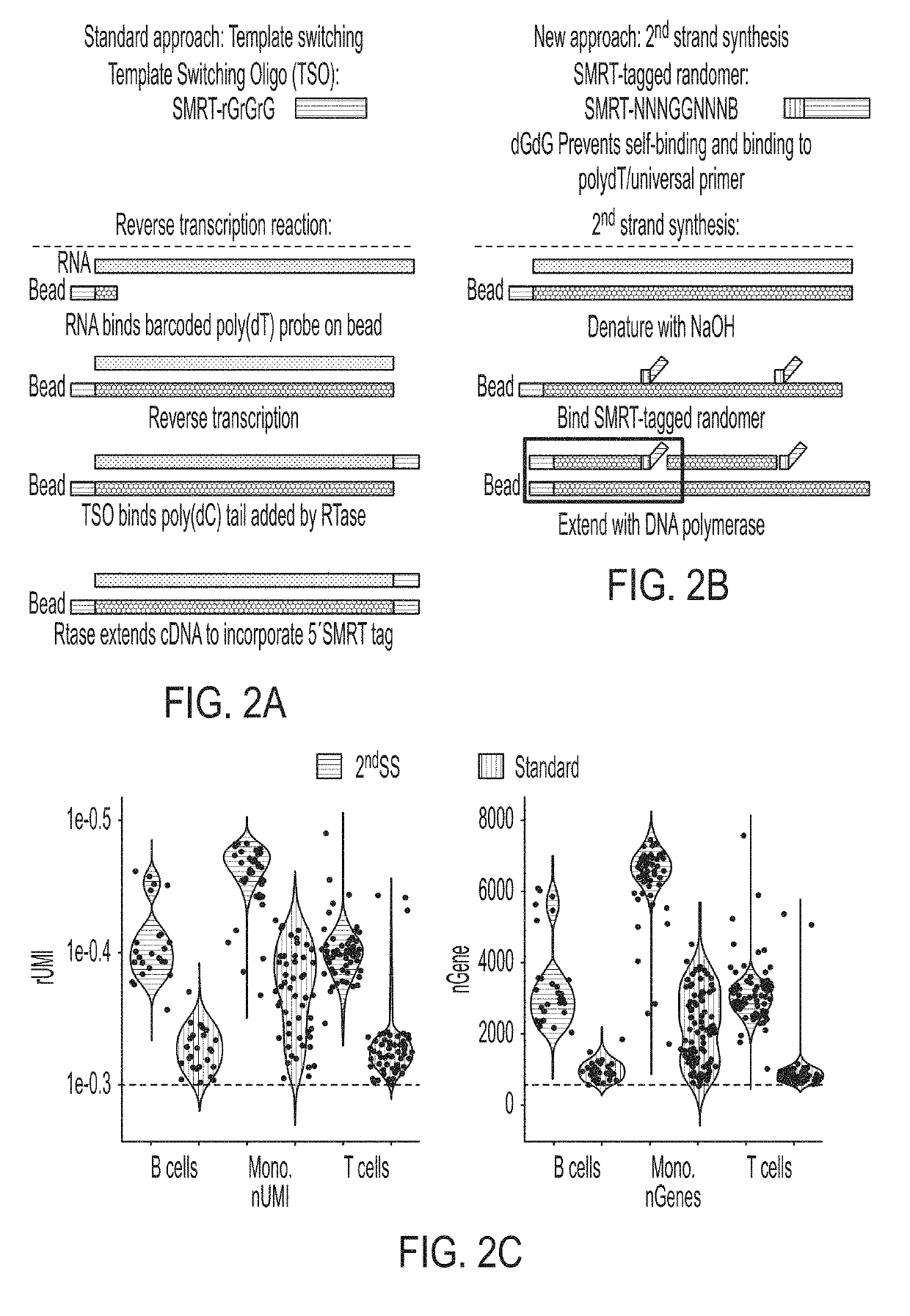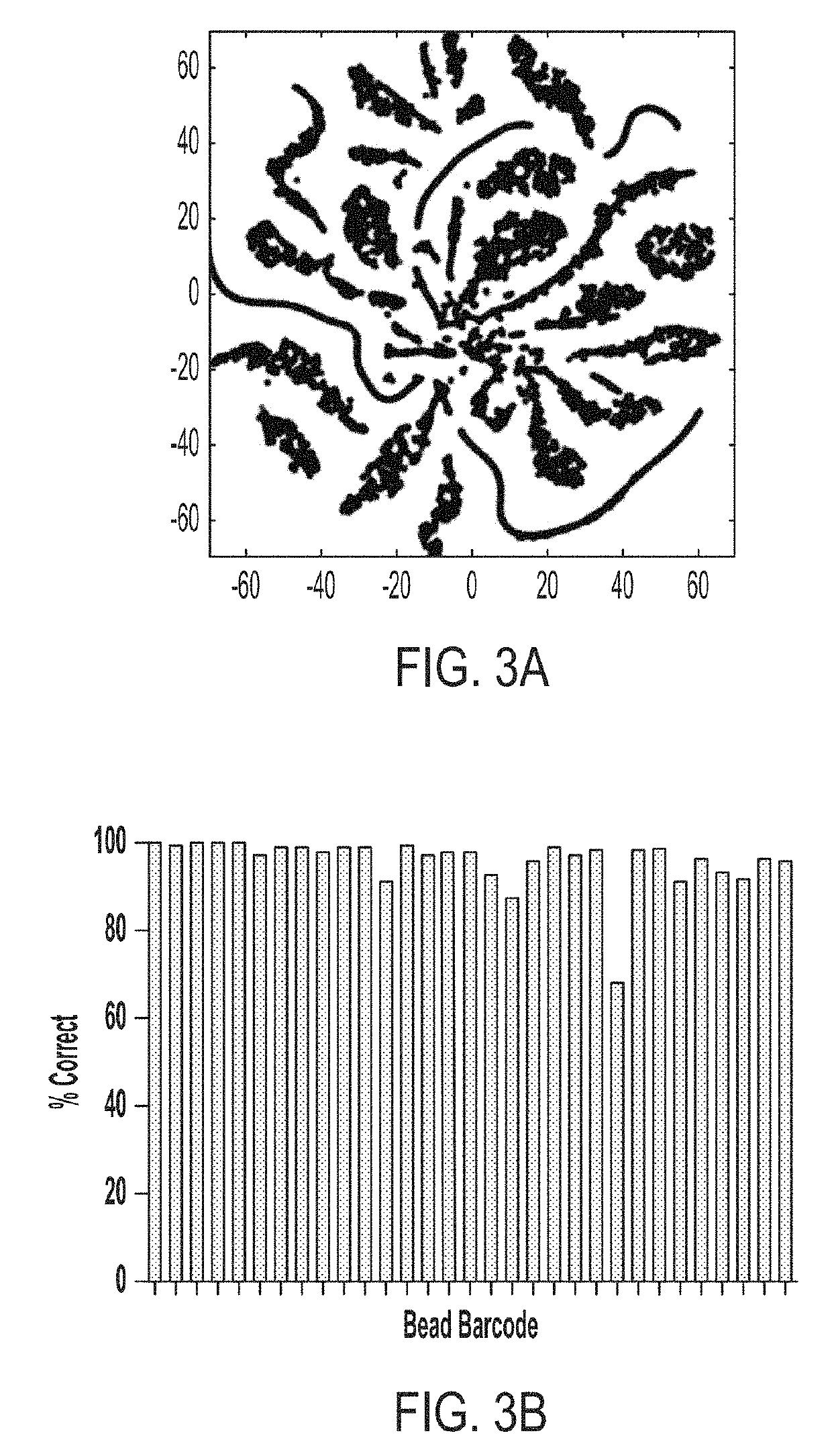Single cell analyses
a single cell and transcript technology, applied in the field of single cell analysis, can solve the problems that additional measures have not been linked to the full transcriptome of each cell, and achieve the effects of improving the robustness of such assays, reducing the likelihood of cross-contamination, and increasing the proportion of single cell transcripts
- Summary
- Abstract
- Description
- Claims
- Application Information
AI Technical Summary
Benefits of technology
Problems solved by technology
Method used
Image
Examples
example 1
Second Stand Synthesis Protocol
0.1 M NaOH
TE—10 mM Tris, 1 mM EDTA pH 8.0
TE—0.5% SDS
TE—0.01% Tween
RT Reaction—No TSO
[0404]40 uL 5× Maxima buffer
80 uL 30% PEG8000
[0405]20 uL dNTPs
5 uL RNase Inhib
10 uL Maxima RT (Thermo)
[0406]45 uL water
2nd Strand Synthesis Reaction
[0407]40 uL 5× Maxima buffer
80 uL 30% PEG8000
[0408]20 uL dNTPs
2 uL dN-SMRT oligo (1 mM)
5 uL Klenow Exo—(NEB)
[0409]53 uL water
(SEQ ID NO: 1)dN-SMRT oligo - AAGCAGTGGTATCAACGCAGAGTGANNNGGNNNB
Beginning after 2nd wash of TE-Tween after Exo treatment of standard Seq-well protocol
[0410]1) After aspiration of 2nd TE-Tween wash, resuspend beads in 500 uL 0.1 M NaOH
[0411]2) Rotate tube for 5 min at room temp.
[0412]3) Spin and aspirate supernatant
[0413]4) Wash 1× in TE-Tween
[0414]5) Wash 1× in TE
[0415]6) Resuspend beads in 200 uL 2nd strand synthesis reaction.
[0416]7) Rotate at 37 C for 1 hr
[0417]8) Wash beads 2× in TE-Tween
[0418]9) Wash 1× in TE
[0419]10) Resuspend beads in 200 uL of water
[0420]11) Count beads
[0421]12) Proceed to stan...
example 2
arcoding Protocol Sealing Picowell Array with Barcode Microarray
Reagents
Spatial Barcode Microarray Extension
[0422]In situ synthesized microarray—80 k features
[0423]Each feature is 5′-dT17-SpatialBC10-CAACTCTGCGTTGATACCACTG-3′(SEQ ID NO: 2)[0424]Hyb Buffer—6×SSC, 10% formamide, 0.01% Tween20, 0.01 mg / mL BSA[0425]Klenow exo—Rxn—1× Buffer 2, 30 uM dNTPs, 0.2 U / uL Klenow Exo-Optional: 6 uM Texas Red-5-dCTP to visualize extension product
20×SSC buffer
Primers(SEQ ID NO: 3)SpatBC oligo / 56-FAM / / iAmMC6T / AAGCAGTGGTATCAACGCAGAGTTG (HPLC purified)
0.1 M sodium bicarbonate buffer pH 8.5
NHS-S-S-biotin
Seq-Well Array Conjugation
[0426]standard chitosan / aspartate Seq-well nanowell array
EDC ((1-ethyl-3-(3-dimethylaminopropyl)carbodiimide hydrochloride)-(Thermo 22980)
NHS (N-Hydroxysuccinimide)-(Thermo)
[0427]BupH MES saline buffer pH 4.7 (Thermo 28390B)
PBS
Streptavidin (Biolegend)
[0428]60×25 lifter slip (Electron Microscopy Sciences)
Amplifying / Sequencing Spatial Barcode
[0429]Ampure beads (Beckman)
Klenow E...
example 3
arcoding Protocol Using Picowell Array Synthesized on Barcode Oligo Microarray
Reagents
Spatial Barcode Microarray Functionalization
[0554]In situ synthesized microarray—80 k features, not deprotected
[0555]Each feature is 5′-dT17-SpatialBC10-CAACTCTGCGTTGATACCACTG-3′ (SEQ ID NO: 2)
Acrydite phosphoramidite (0.1M in anhydrous acetonitrile)
3% Trichloroacetic acid (TCA) in dichloromethane (DCM)
0.3M BTT
[0556]0.1M iodine in THF / pyridine / water
Final Deprotect solution—Ethanolamine:Ethanol 1:1 solution
Spatial Barcode Microarray Extension
[0557]Hyb Buffer—6×SSC, 10% formamide, 0.01% Tween20, 0.01 mg / mL BSA
Klenow exo—Rxn—1× Buffer 2, 30 uM dNTPs, 0.2 U / uL Klenow Exo—
[0558]Optional: 6 uM Texas Red-5-dCTP to visualize extension product
20×SSC buffer
Primers(SEQ ID NO: 3)SpatBC oligo / 56-FAM / AAGCAGTGGTATCAACGCAGAGTTG(HPLC purified)
Picowell Array Surface Functionalization
[0559]0.2% chitosan in 0.1M acetic acid pH 6.0
1% BSA in PBS
Amplifying / Sequencing Spatial Barcode
[0560]Ampure beads (Beckman)
Klenow Exo...
PUM
| Property | Measurement | Unit |
|---|---|---|
| pore size | aaaaa | aaaaa |
| diameter | aaaaa | aaaaa |
| diameter | aaaaa | aaaaa |
Abstract
Description
Claims
Application Information
 Login to View More
Login to View More - R&D
- Intellectual Property
- Life Sciences
- Materials
- Tech Scout
- Unparalleled Data Quality
- Higher Quality Content
- 60% Fewer Hallucinations
Browse by: Latest US Patents, China's latest patents, Technical Efficacy Thesaurus, Application Domain, Technology Topic, Popular Technical Reports.
© 2025 PatSnap. All rights reserved.Legal|Privacy policy|Modern Slavery Act Transparency Statement|Sitemap|About US| Contact US: help@patsnap.com



